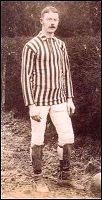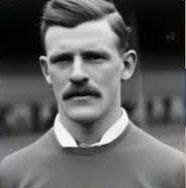"Until 1876 there is little of note with which the club can be identified, but towards the end of the season of 1876/77 (ed: this should be 1875/76) they were joined by three Scotchmen, two brothers named Lindsay, who came from Golspie in Sutherlandshire, and Mr G. B. Ramsay.
The Lindsays showed the Villa how to play a good back game, and Ramsay, who had for several seasons previous been considered a very fair forward in the Glasgow Rovers, a club which when it died gave several good players to the Queen's Park, taught them dribbling."
“Aston Villa (seemed) to me as a club that had come rapidly to the fore and asked me to become a member of it. I hesitated for some time, but at last my friend told me that a "brother Scot," Mr. George Ramsay, was the Villa captain and that decided me. Mr. Ramsay was a Glasgow man and had exerted himself very considerably to bring the Villa team into the front rank.”



